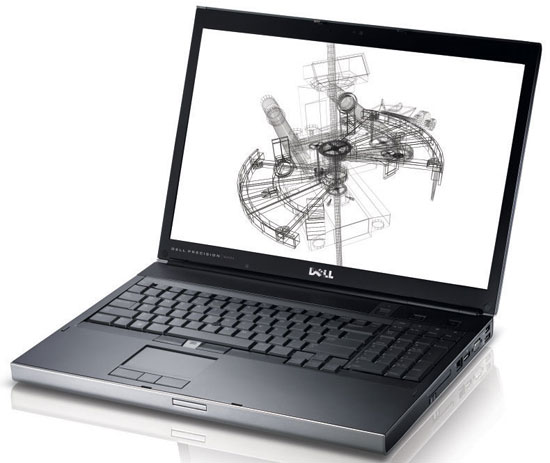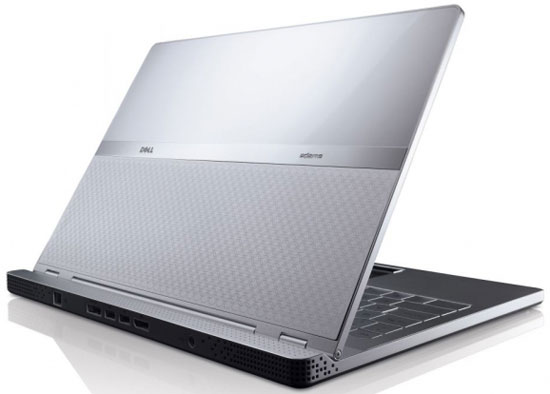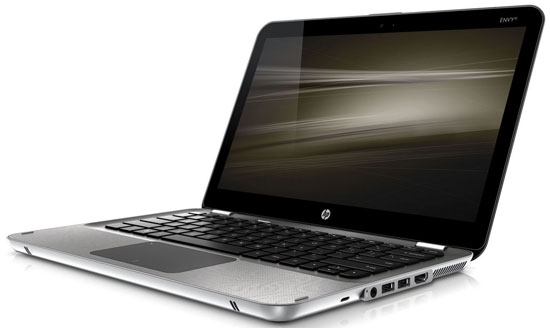Mobile Buyers' Guide, December 2009
by Jarred Walton on December 6, 2009 12:00 AM EST- Posted in
- Guides
Mobile Workstations
If you're looking for a truly powerful mobile workstation, there's really nothing else that can match the CPU power offered in the Clevo D900F. It will accept the fastest desktop Core i7 Bloomfield processors, giving you up to 3.33GHz of steady number crunching prowess. The D900F is a beast, weighing nearly 15 pounds and delivering an hour of battery life, but as a transportable workstation it will outperform any mobile CPU by a significant margin. Companies like Eurocom even support up to 24GB of memory if you need lots of RAM for a mobile server.

If you're looking for something less bulky, Dell's Precision M6400 is very nice and even has (or at least had?) a matte LCD option. The M6500 is the new Core i7 version of the M6400, with a higher base price. Both models have four SO-DIMM slots and support up to 16GB of RAM, or 8GB via four SO-DIMMs without breaking the bank. These notebooks are truly intended for workstation use, though, as they come with either NVIDIA Quadro or ATI FirePro GPUs, and they have a 3-year warranty standard.
Designer Laptops
If you're more interested in aesthetics than performance, look at the HP Envy and Dell Adamo laptops. We've already mentioned the HP Envy 15 as a gaming option, so we'll confine our discussions here to the Envy 13. Also note that the base model Adamo actually comes in at $1500, but any upgrades will bump you into the "high-end" territory.

At their core, Adamo laptops (including the XPS) are essentially CULV designs, but with an emphasis on being thin. The standard Adamo laptops ship with Core 2 SU9400 CPUs (1.4GHz, 3MB L2, 800FSB) - it's marginally faster than the Pentium SU4300 found in significantly less expensive laptops. Adamo battery life is listed as 5+ hours with a 40Wh battery. The Adamo XPS is a more exotic design with a fold-down keyboard, and it comes with a 128GB SSD and a 4GB DDR3 SO-DIMM with a starting price of $1800. The newer Adamo is available in black (onyx) or white (pearl), and it's available in two basic configurations. The $1500 "Admire" model has the same SU9400 and a 128GB SSD, but it ships with 2GB DDR3. The $2300 "Desire" ups the ante significantly, with 4GB DDR3, a 256GB SSD, and a Core 2 SL9600 CPU (2.13 GHz, 6M L2, 1066FSB). The SL9600 is a 17W TDP vs. 10W TDP for the SU9400, so battery life may also be slightly lower in that configuration.

The HP Envy 13 is similar in many ways, but with a bit more in the way of customization options as well as some higher performance accessories; specifically, HP includes a discrete ATI HD 4330 GPU on all Envy 13 models - good for graphics performance, but bad for battery life, but thankfully it's disabled and you use the IGP by default when unplugged. You can get the Envy 13 with SL9400, SL9600, or SU9600 CPUs (the latter two add $100 each, with the SU9600 actually providing the lowest performance but best power characteristics). Envy comes with 1GB DDR3 soldered on the motherboard and either 2GB or 4GB in the SO-DIMM slot. For the hard drive, HP lets users choose between a standard 250GB 5400RPM HDD, or you can upgrade to a 160GB SSD. That means unlike the Adamo, you're actually getting what we consider to be the best current SSD. HP also gives you a choice between a 13.1" 1366x768 LCD panel, or a 1600x900 panel for $100 more. Last, we'd look at adding the extra capacity 6-cell battery (which you can only get by purchasing the standard 4-cell with the 6-cell).
All told, the Envy 13 with the upgrades listed above will price out to $2475 ($2350 without the extra battery), and in terms of specs it looks to be better than the Dell Adamo. Having used neither one in person, we can't say which has the better feel, but there are numerous complaints about the Envy 13 touchpad and we recommend caution before taking the plunge. Honestly, while both laptops look nice, we'd still recommend saving a bundle of money and dropping down to something a little less stylish and a lot more affordable - any of the CULV laptops we mentioned earlier should suffice.










49 Comments
View All Comments
zicozz - Friday, December 11, 2009 - link
I'm looking for a smaller laptop and I'm currently aiming at either the Asus UV30 or the Asus F83. Can't seem to find any reviews of the F83, but the UV30 seems to be the king in this hill in it's class.zicozz - Friday, December 11, 2009 - link
Sorry UL30 not UV30JarredWalton - Friday, December 11, 2009 - link
The major difference between the UL80Vt and the UL30Vt is the screen size (13.3" for the UL30Vt) and the lack of an optical drive. It also weighs about 1 pound less. If you want something a bit smaller, go for it, but make sure you get the UL30Vt; there's an older UL30 that doesn't support Turbo33 and comes with a smaller battery I believe.jtsarnak - Tuesday, December 8, 2009 - link
I cannot recommend any Sony laptops, even the SR mentioned in this article for its good screen. I am the owner of a Z series and this laptop would have been near perfect except for one problem that is plauging most of Sony's line: Battery Drain.See here:
http://forum.notebookreview.com/showthread.php?t=4...">http://forum.notebookreview.com/showthread.php?t=4...
And here:
http://forum.notebookreview.com/showthread.php?t=2...">http://forum.notebookreview.com/showthread.php?t=2...
These are just two examples, there are a ton of threads out there discussing the problem. Sony's line has the unfortunate "feature" of draining the battery while the laptop is completely shut down. I say "feature" because numerous consumer attempts to get Sony to rectify the issue have been met with a canned response that this is typical for their laptops.
I have also emailed various websites and publications in an effort to get someone with a little more visibility and press to address the issue with Sony but to no avail. Sony continues to get good reviews on their machines but I'm doubting the reviewers ever bother to look for the drain during the review process.
Maybe Anandtech will take up the call. Sony is delivering a defective product (a mobile device that loses battery when it is shut off is, imho, defective) and claiming it as a "feature". Anandtech did a great job getting to the bottom of the SSD debacle with the JMicron drives, perhaps they can help us Sony owners as well. In the meantime, avoid these laptops if you don't plan on having it forever plugged in when you're not using it.
aznchum - Tuesday, December 8, 2009 - link
I'm an avid fan of IPS panels, and the only notebooks that I know carried them were the Flexview Panels on the IBM/Lenovo Thinkpads. If LCD quality is of a huge concern to you, you probably are better off picking up a Thinkpad x200 (non s) and retrofitting a BOE-Hydis HV121WX4-100 panel (12.1" 1280x800) in it. However, most of these panels floating around the market have a digitizer attached, since they're sourced from tablet PCs. So the mod is kind of a pain in the ass. I personally have modded a T60p with a QXGA screen and found it to be a relatively easy mod with the hardware maintenance manual. The 4:3 15" chassis of the T60/61 and R60/61 are probably the fastest notebooks you can buy that come with Flexview panels. If you're not snobby about LCDs, then go with the recommendations in this guide.CheesePoofs - Monday, December 7, 2009 - link
Thanks for the article, I've been looking forward to something like this!The UL30VT seems pretty interesting to me - same specs as the UL80VT but smaller package making the low-res screen a bit more bearable (I hope).
Also is there any word on when Arrandale laptops will come out? I've heard Jan 7th for Arrandale chips, but I have no sense of what the delay is between chip release and laptop availability.
btmedic04 - Monday, December 7, 2009 - link
I recently purchased a Sony Vaio VPPCW17FX at Best Buy for $799 (before tax) and I am absolutely thrilled with it (especially since i was coming from an ancient HP ZV6000 series with a desktop Athlon 64 3200 that weighed 7 lbs and looks like hell. served its purpose though, but i sure was surprised to see it survive a deployment to Iraq lol)Specs are as follows:
Intel Core2Duo T6600 2.2ghz 2MB L2 800mhz FSB
4GB DDR3 1066 (for some reason at DDR3 800mhz with no option to set 1066 in bios >.< )
500GB Hard Drive
Nvidia G210M with 256mb GDDR3 ram
Blue-Ray player
14" Monitor @ 1366x768
5.5 lbs
Windows 7 Home Premium 64bit
Not bad at all for the price I paid for it. It gets almost 3 hours of battery life with the Balance power plan in Windows 7. I also love the chic let style keyboard and theres no discernible flex in the chassis (as you can understand, im not about to try to fold my notebook in half long-ways LOL) It has 3 USB ports, a firewire 400 port, VGA port and HDMI. I havent tried any gaming on it yet, however I suspect with the lower resolution monitor, I should be able to play modern games with lower settings and older games with higher settings (much better than the integrated ATI Xpress 200m in my old laptop) I have hooked this laptop up to my 32" LCD TV and watched blue-ray movies at 720p with out any issues. Also, Sony released updated drivers for the G210M the day Nvidia did (I dont want to risk the nvidia release drivers as my friend totally destroyed all gaming capabilities on his laptop equiped with a Go7900GS. needless to say Toshiba sucks when it comes to driver updates) All in all, the VPCCW17FX is a great notebook at a great price
Roland00 - Monday, December 7, 2009 - link
No intel Celeron t3000 dual core love?It is the same chip as the intel pentium dual core t4200 except it runs at 1.8 ghz instead of 2.0 ghz and intel speedstep has been disabled (thus it won't get good battery life). Yet I seen this chip routinely in the 320 to 450 price range for laptops and it should blow away the competition in that price range.
http://ark.intel.com/Product.aspx?id=40738">http://ark.intel.com/Product.aspx?id=40738
JarredWalton - Monday, December 7, 2009 - link
Is it really that much cheaper than the Pentium T4200/T4300 laptops? I see prices of $430 (Toshiba Satellite L455-S5980) to $500+ (Lenovo ThinkPad SL410/SL510), and that's not even with a well-equipped laptop (i.e. 2GB of RAM, 160GB HDD). The Lenovo G550 is 3GB, 250GB HDD, and T4300 for http://www.provantage.com/lenovo-2958acu~7LENO1EE....">$495 or so. It's obviously not a huge jump from 1.8GHz 1MB to 2.1GHz 1MB, but SpeeStep is a pretty big omission IMO.Roland00 - Monday, December 7, 2009 - link
The pentium t4200/t4300 will be about 50 dollars more on average. For example without any sale go to the Toshiba website and you can get a T3000, 2gb memory, 160 gb hd and wifi n For $400, it costs 44 more for the pentium dual core.Now the whole point of the t3000 though is not to buy the laptop at the normal price, the same or similar laptop will go on sale. For example fry's has had a similar laptop to the toshiba but an msi 14 inch on sale a couple times for $319 (once) and $349 (twice). The msi also didn't use intel integrated graphics but instead the 8200m (half the speed of the ion but still 30 to 40% faster than the 4500m hd)
$319 is only 20 dollars more than those mythical $299 acers/hps that walmart was selling that was using the amd single core at 1.6 ghz (tf-20)